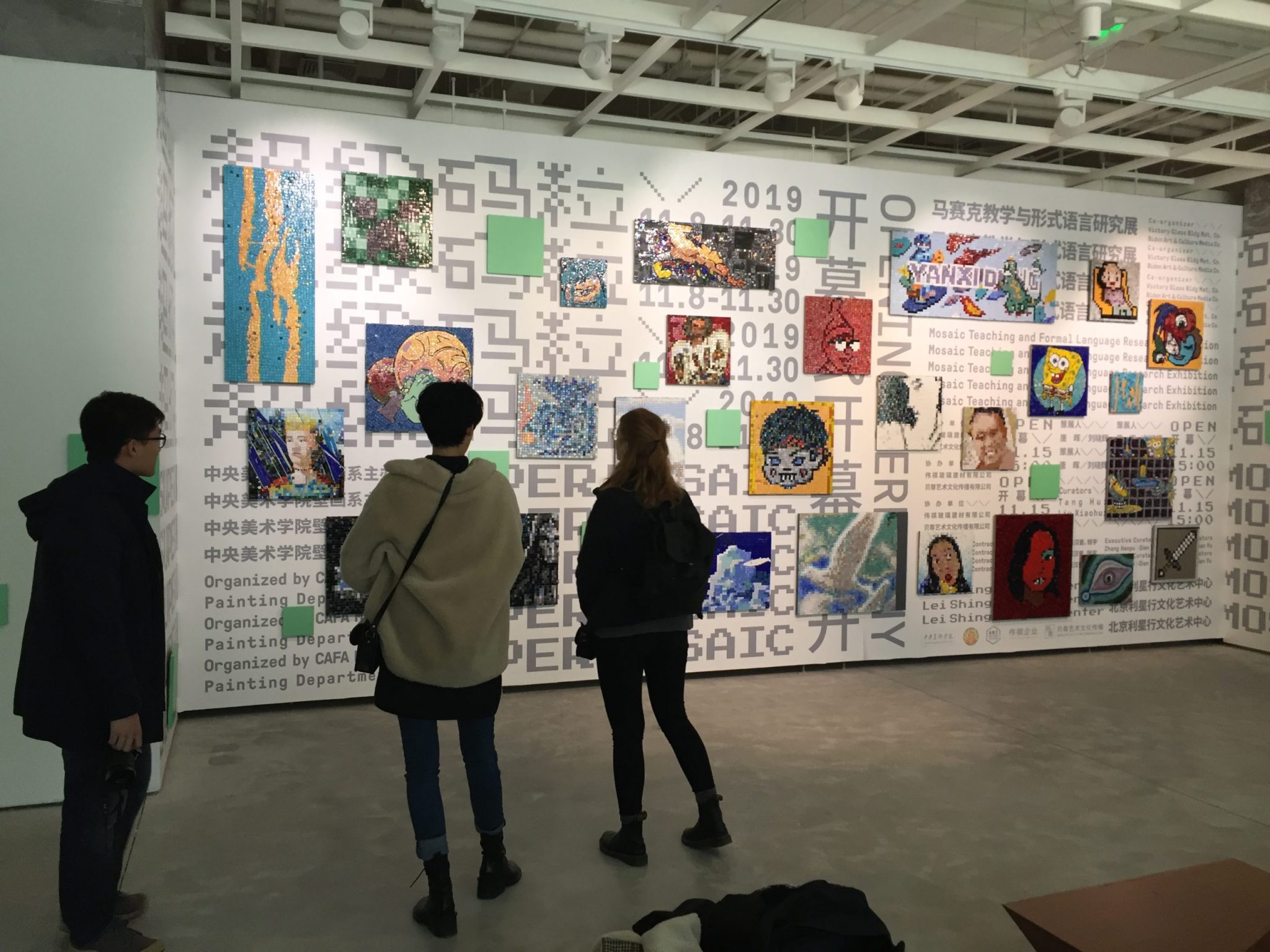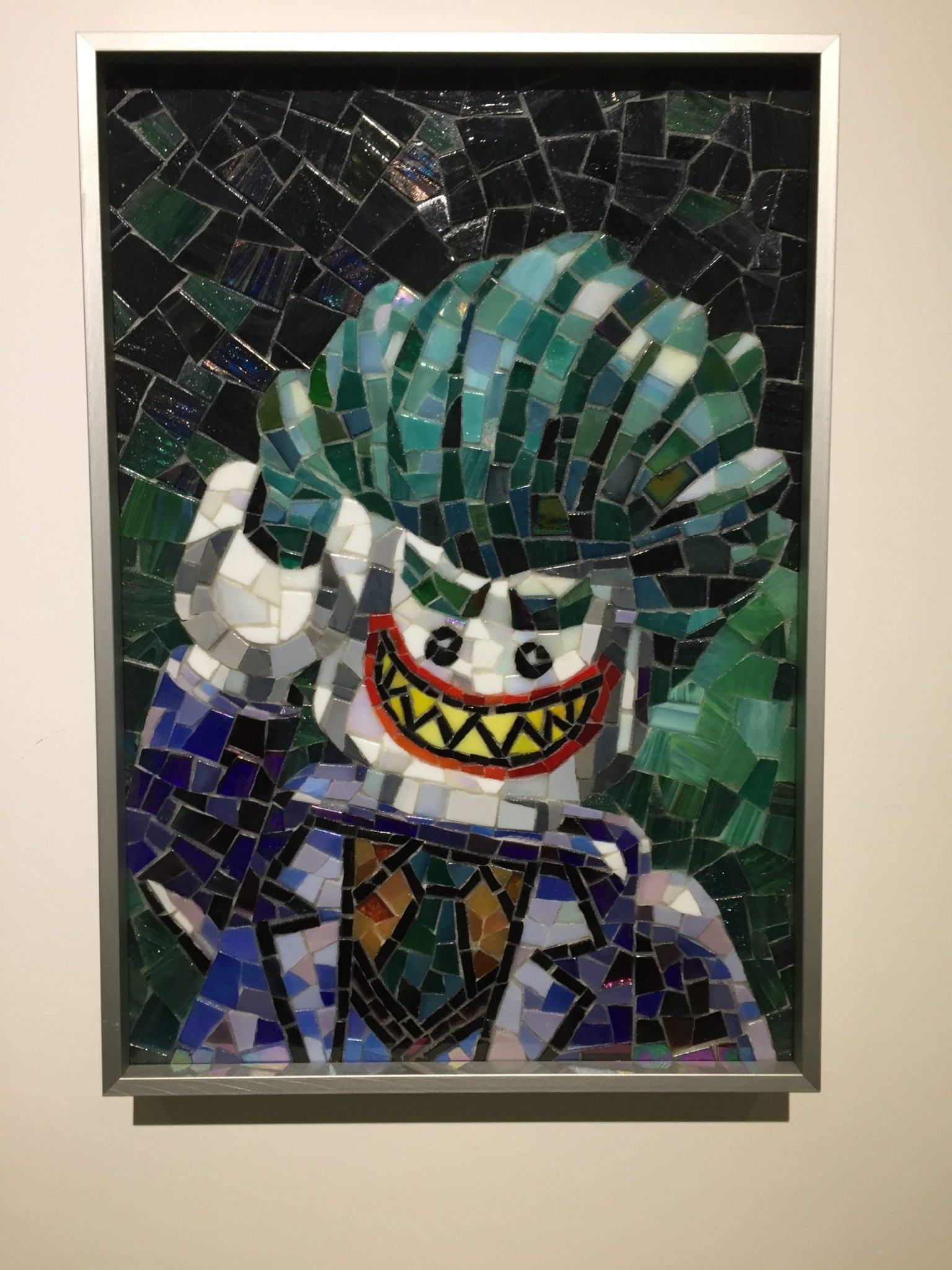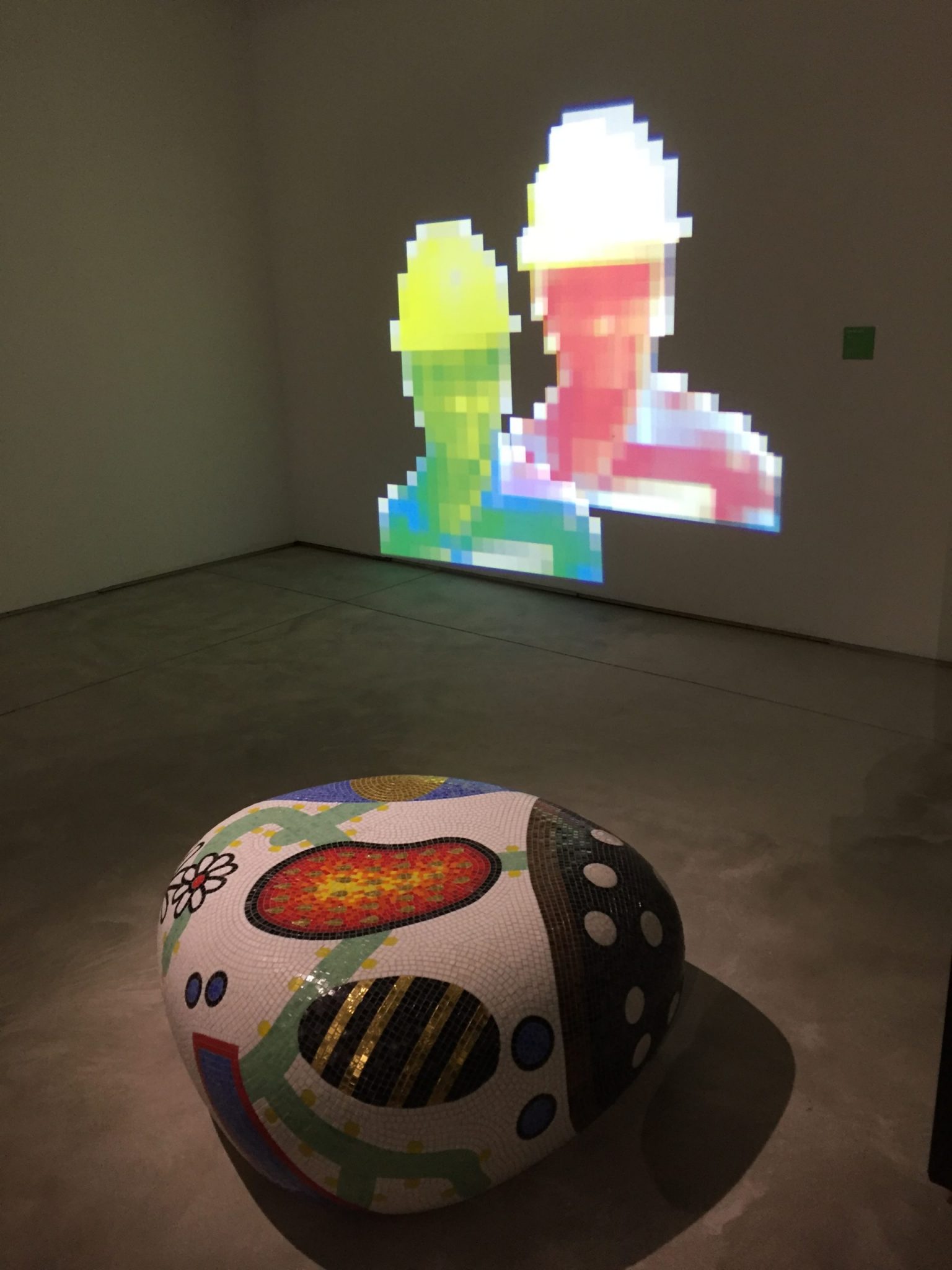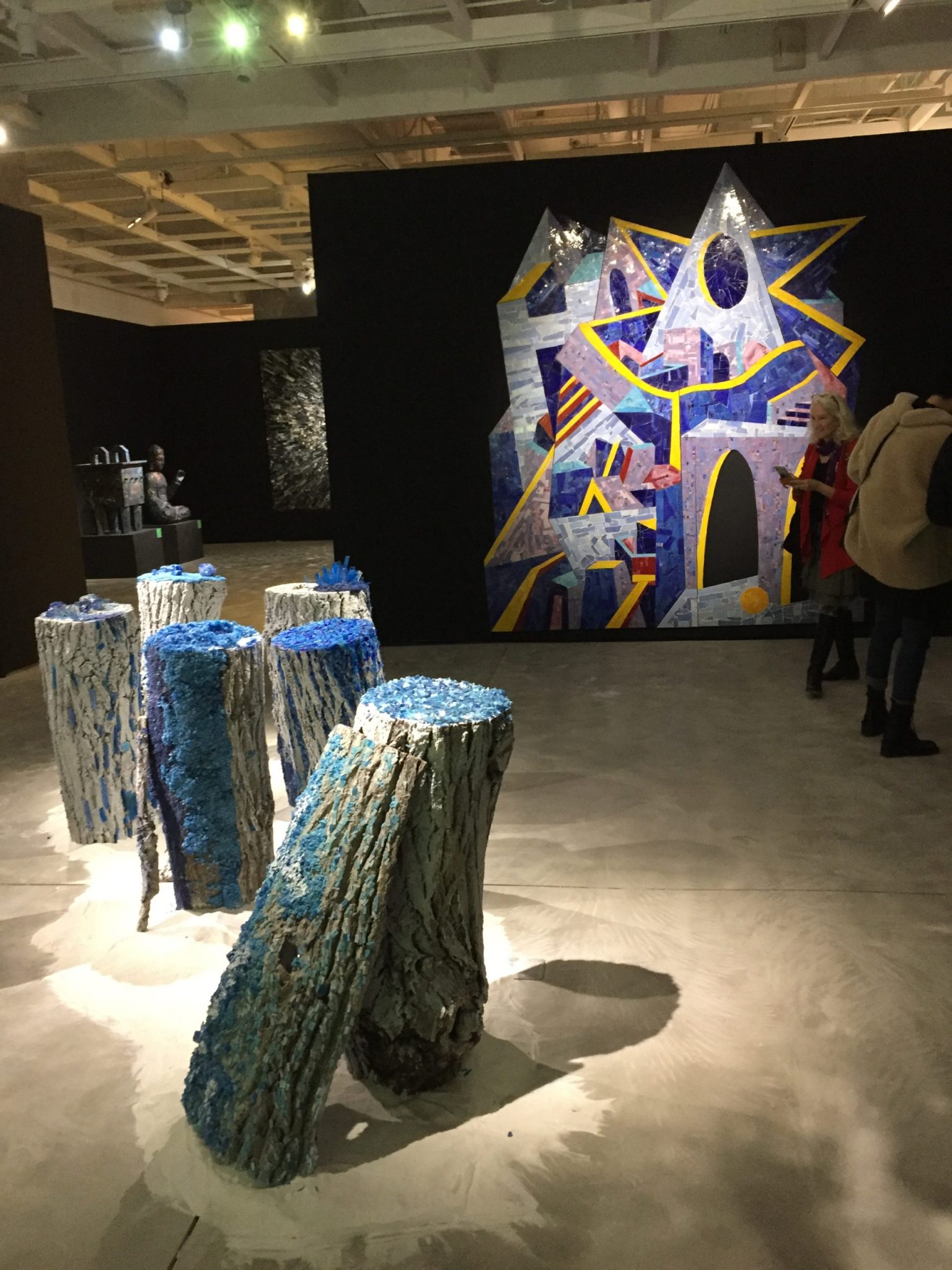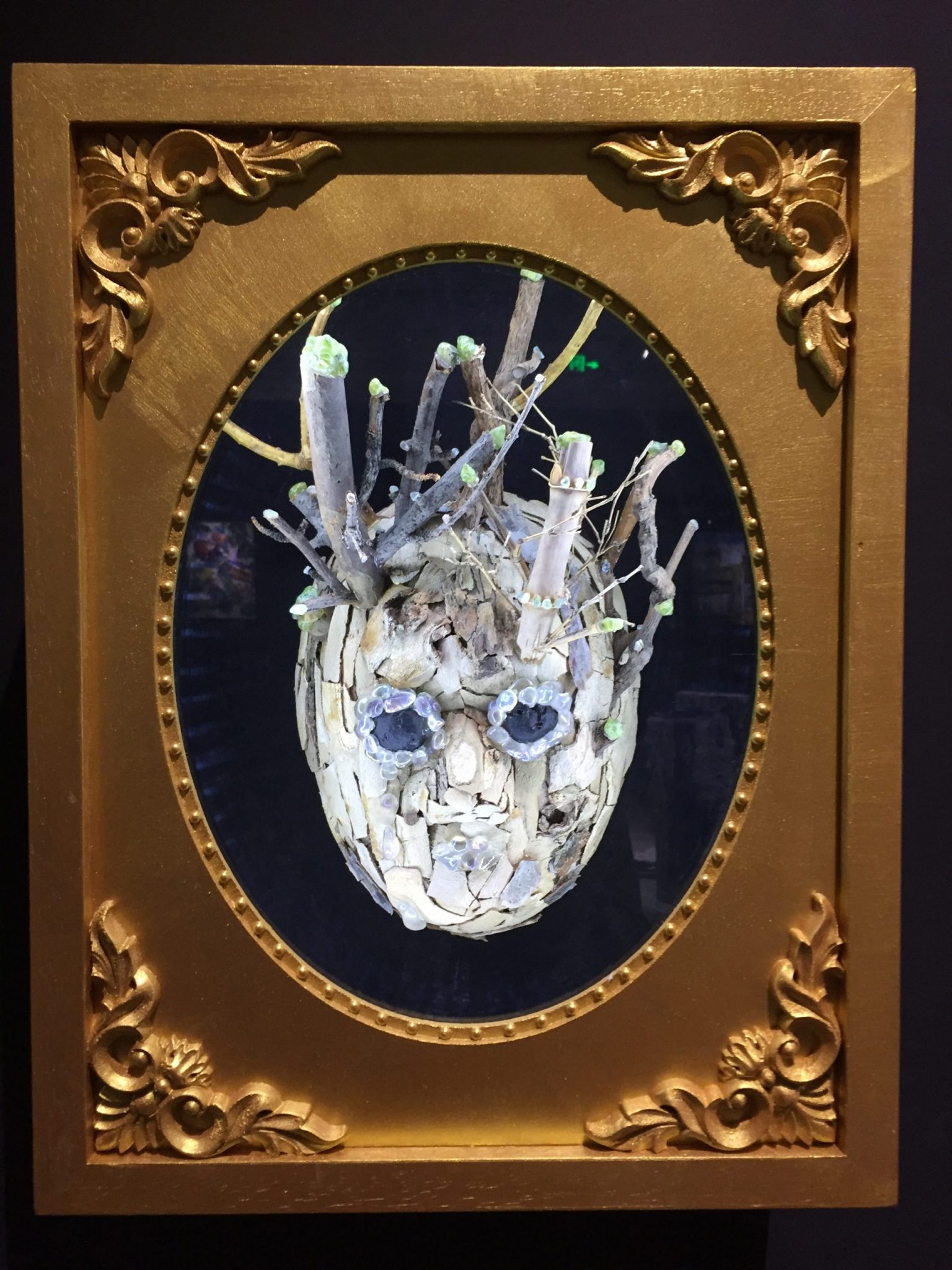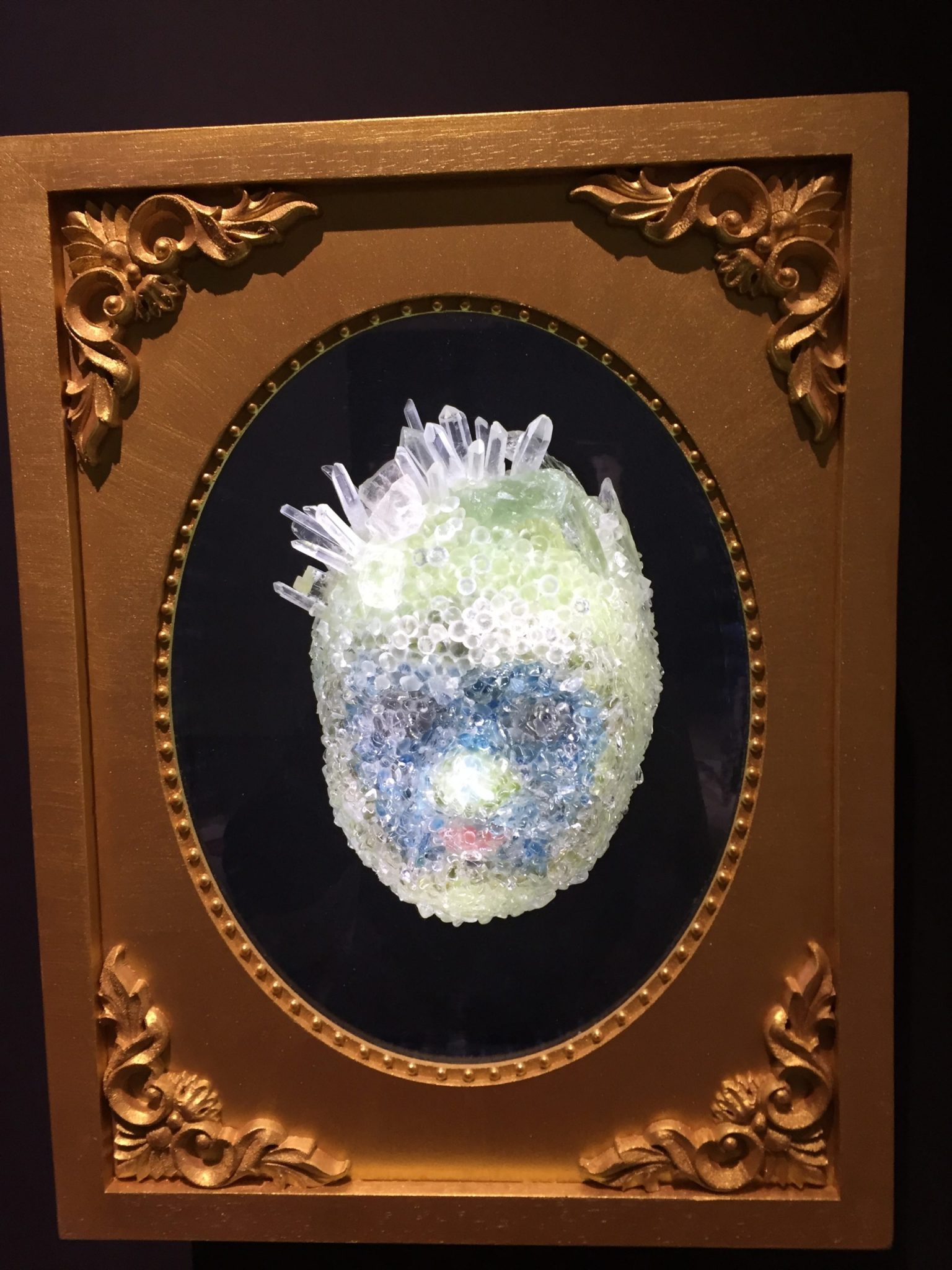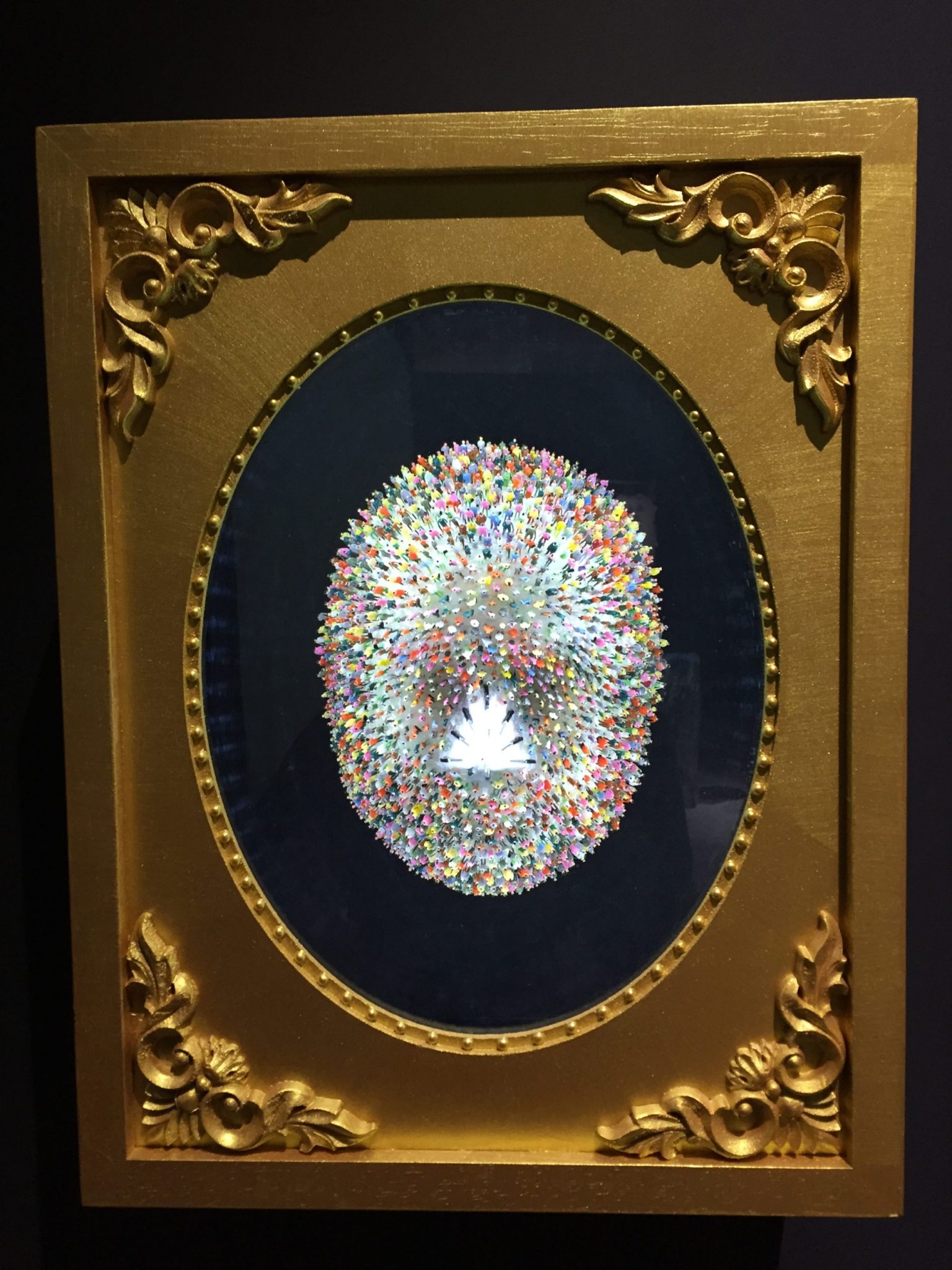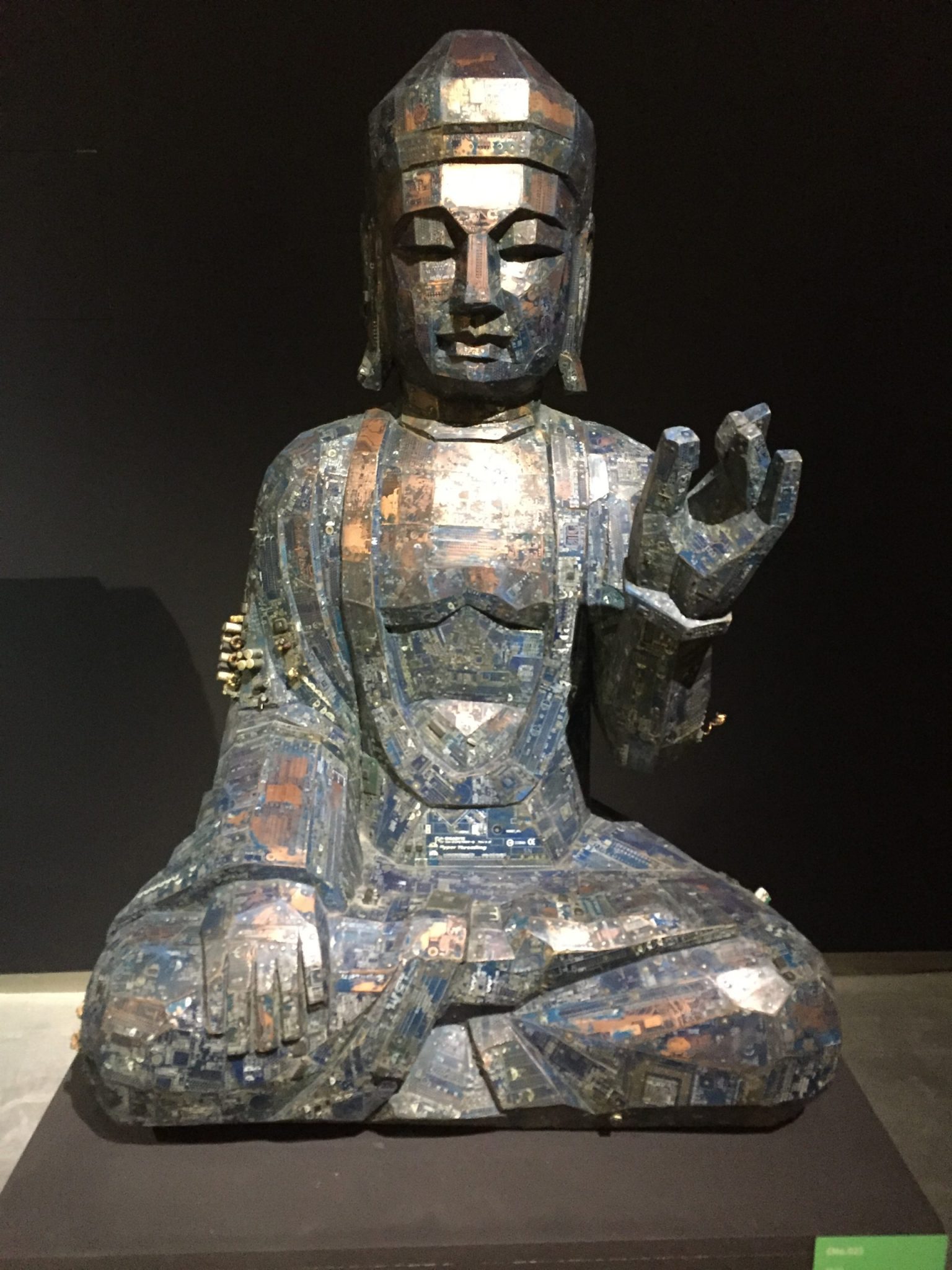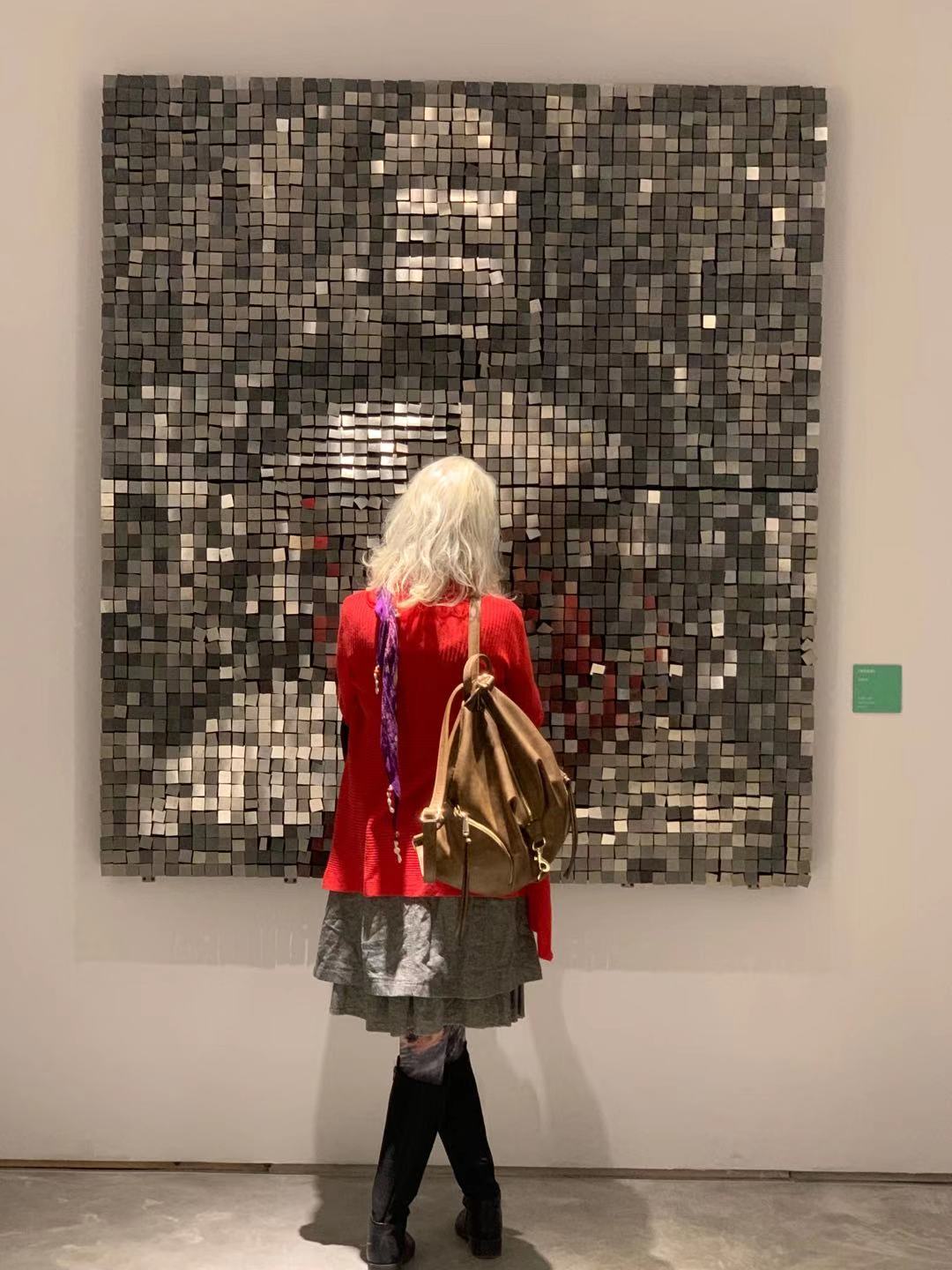“Super Code Grain“
Mosaic Teaching and Formal Language Research Exhibition – Beijing
On 8 November I was invited to the opening of “Super Code Grain” an amazing mosaic exhibition of the mural painting department of the Central Academy of Fine Art in Beijing. Prof Li Chen, her assistant Shi Jiutian and her colleagues and students created this show in a large centrally located exhibition hall of the building that also houses the Daimler offices in Beijings district of Wanjing. Many of the mosaic associations I know would dream to have their works exhibited in such a professional exhibition space.
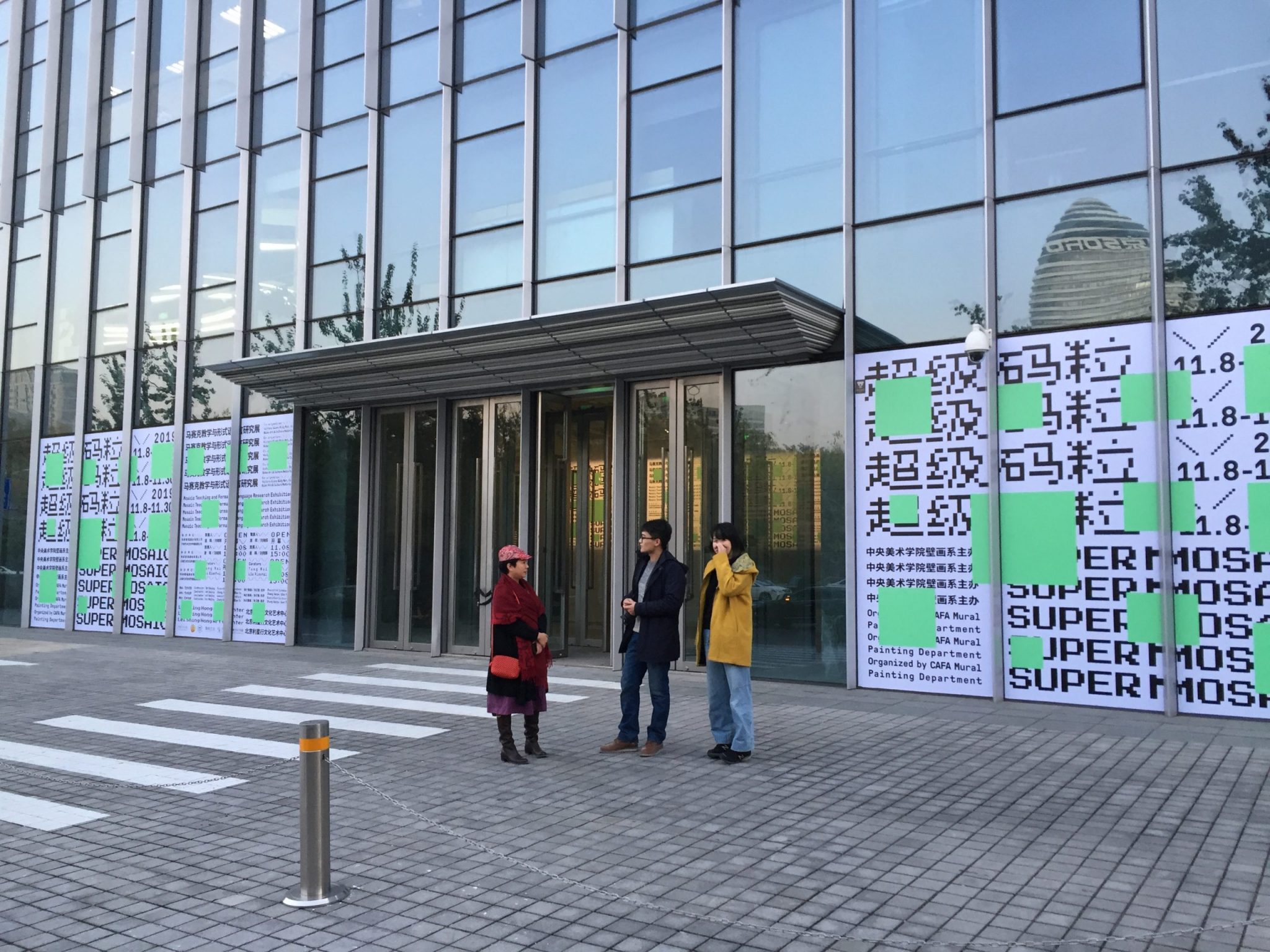
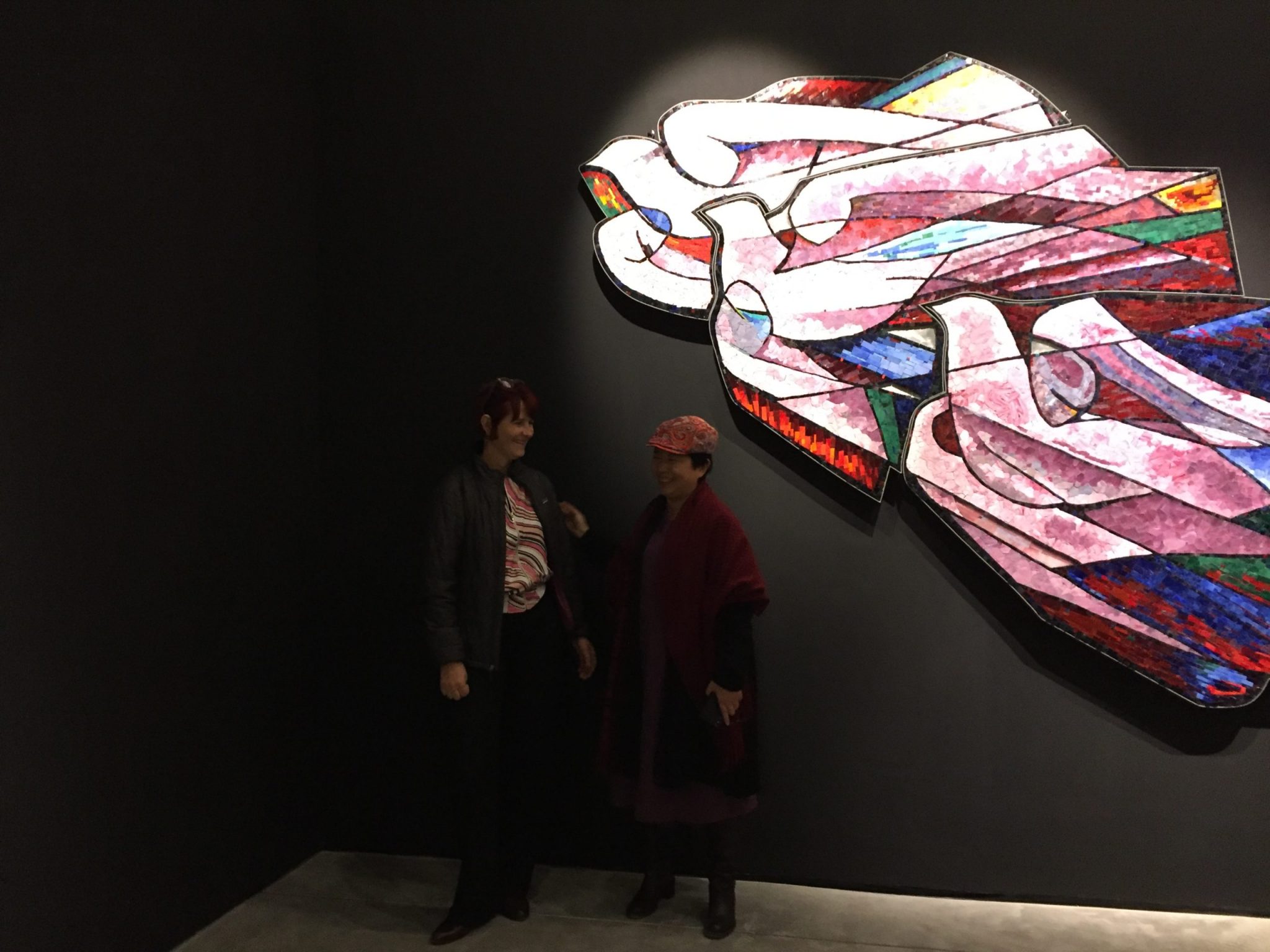
On November 22 I took some friends to the exhibition. Everybody was in awe about this very interesting display of mosaic history, mosaic works and related pixel images.
We were shown around by Prof Li’s assistant Shi Jiutian, who’s main project organizing this exhibition was in the last year.
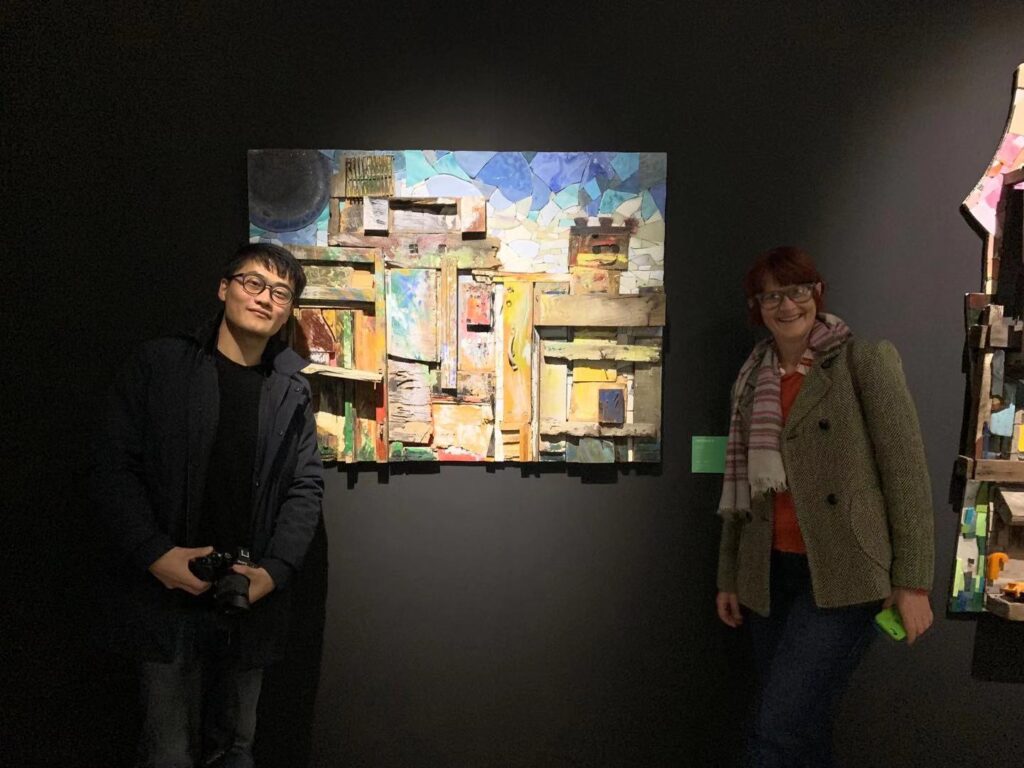
Guangming Daily reporter Rongchi about the exhibition:
Mosaic is a material with unique beauty. Its luster, color and texture together form the formal language of the mosaic art. On the ancient Mesopotamia plain, Sumerians mosaic the temples with mosaic fragments; during the sacrifice activities of the Yangshao Culture period, people collaged with colored stones; and in contemporary times, artists mosaic with mosaic particles The picture, deconstructing and reconstructing the world with digital pixels, has created many beautiful works, which are not only colorful but also sparked many people’s thinking about the language of materials.
Recently, the “Super Code Grain-Mosaic Teaching and Formal Language Research Exhibition” hosted by the Mural Department of the Central Academy of Fine Arts was held in Beijing. The exhibition is divided into three units: “Story of Code Grain”, “Code Grain Studio” and “Code Grain Laboratory”. With more than 100 works, it shows the in-depth research of the mosaic art by teachers and students of the Department of Mural Painting, and in practice Formation of artistic ideas and artistic features.
“The theme of the exhibition ‘Super Code Grain’ summarizes the rich connotation of mosaic art from tradition to contemporary, from mosaic grain to digital pixels. ‘Code’ means code and digital, which are the means of image realization and presentation involved in the concept of ‘pixelation’ “Grains” means particles and particles, which are the smallest constituent units of the concept of “mosaic.” Tang Hui, deputy dean of the Central Academy of Fine Arts and the director of the Mural Department, said that when he introduced the theme of the exhibition, a complete mosaic work It is composed of countless small units. The artist needs to master the relationship between the whole and the part of the artwork skillfully, and acutely perceive the layered sense of color, so as to pick out the materials that best meet the overall creative requirements and cut them. Handle and place it just right. Therefore, in the creation of mosaic art, the choice and application of materials are particularly important.
Entering the exhibition hall, the colorful mosaic materials of various shapes displayed in the first unit of the exhibition “The Story of the Grain” attracted the attention of many viewers. Glass mosaics have obvious light feeling and rich colors. Ceramic mosaics are elegant and elegant, delicate and moist. Stone mosaics are simple and natural, rich in texture, metal mosaics are highly malleable, and stylish in texture …. This unit’s history and material language of the ancient mosaic technique of mosaics. The technological process was combed and looked back, and invited the audience to touch and understand the materials and tools of mosaic making in the most direct way, to feel the original charm of mosaic art, and taste the craftsmanship spirit contained in it.
“The birth of mosaic works has to go through the process of raw material production, fine shearing, sieve plate, waterjet, inlay, etc., and only the raw material production process, and also has to go through a series of processes such as high temperature smelting, drum molding, mold introduction, etc. It is tedious and precise art, and it is also an art touched by hands. It can be said that each piece of work is dedicated to the patience and sincerity of the artist. “Said Liu Xiaohui, deputy director of the Mural Department of the Central Academy of Fine Arts. The second unit of the exhibition, “Code Studio”, presents the mosaic art practice of teachers and students of Yangmei for many years. It mainly includes two parts: the creation of teachers and students and the display of educational practice documents. It reflects the exploration and perception of artists on the road to mosaic art practice. And achievement. Li Huaji’s “Shepherdess” uses a large block mosaic method to depict the image of a shepherdess leaning over to work. The bright colors come from the natural luster of the mosaic material, and the delicate texture collage depends on the artist’s superb skills. Zhu Jinghua’s “City Moonlight” interspersed mosaic materials and glass lenses in a single painting to form a radial composition. Under the illumination of light, the ground in front of the work is instantly filled with “starlight”, creating a fantastic visual effect. Cao Ruixin and Ren Wenkang’s “Legendary Wood” combines mosaic with logs, quartz, and other materials to form a rich-textured installation, which gives full play to the characteristics and aesthetics of different materials.
Since the 21st century, the Internet has become popular among the general public, and the new image observation methods that it has brought have also affected the creation of mosaic art. GIF animations, video images, and other mosaic works in digital pixels have come into being. The third unit of the exhibition, “Code Lab”, invites many new media artists to use digital pixels as “particles” to break and expand the concept and boundary of mosaic, reconstruct the dimension of mosaic in contemporary art creation, and open up for the audience. A cross-disciplinary, cross-field artistic journey, many works are impressive. Among them, He Pengqi’s “Sichuan Youth’s Smile” presents the rustic image of construction workers in the form of lighting installations. “This year, when I was out looking for creative materials, I met a Sichuanese worker. During the conversation, I learned that he had never taken a picture, and there was no picture of a smile. So I snapped a picture of him with a smile It was so warm, simple and natural. Over time, his face gradually blurred in my mind, but I still remember the simple and beautiful smile. “He Pengqi said.
Whether it is a traditional mosaic or a digital mosaic, it is a collage of tiny particles to build a colorful world. As Liu Xiaohui said: “Mosaic art is ancient and brand new. Through this exhibition, the new works of students contrast with the classic works of their predecessors, interpreting and witnessing the changes of materials and techniques over time. Hopefully by this This exhibition awakens enthusiasm and attention for mosaic art, and at the same time, we look forward to the birth of more mosaic art materials and expressions. “
This is an unedited google- translation of the article.
curious about exhibitions in China? Wait a bit – I will write about the second exhibition I visited in November 2019 soon ….
